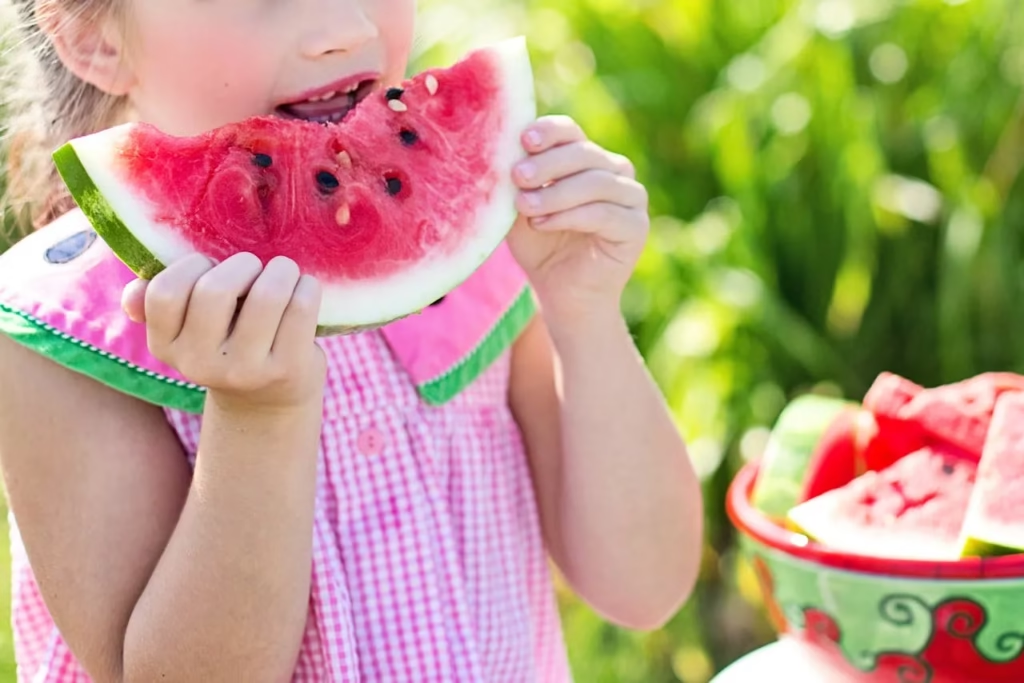Kids develop eating habits that shape their health and well-being for a lifetime. You have the power to guide your children toward making nutritious choices by setting examples and providing wholesome foods. By understanding how to create balanced meals and reading nutrition labels carefully, you can protect your children from harmful ingredients and foster strong bodies and sharp minds. This guide will help you confidently nurture healthy eating habits that support their growth, learning, and future success.
Key Takeaways:
- Parents should carefully monitor and choose what they feed their children, paying close attention to nutrition labels and ingredients.
- Many sugary cereals and fruit drinks marketed to children contain little real nutrition and are often high in sugar.
- Poor eating habits in childhood can contribute to long-term health issues such as heart disease, diabetes, and cancer.
- Marketing and commercials heavily influence children’s food preferences, often promoting unhealthy choices through toys or endorsements by athletes.
- Replacing junk food with healthier options like fresh fruits, vegetables, nuts, and water can significantly improve behavior and overall health.
- Proper nutrition supports better concentration, mental clarity, and energy in children, potentially reducing symptoms related to conditions like ADD.
- Teaching children healthy eating habits early aligns with nurturing their potential and fulfilling their future calling.
Understanding Healthy Eating for Children
A good start to teaching your children healthy eating involves understanding the basics of nutrition and how it influences their growth, energy, and concentration. You must be aware of what you provide daily, as poor eating habits can lead to long-term health issues. For example, many kids are bombarded by marketing promoting sugary products that lack nutritional value. Learn more about Disordered Eating in Young Athletes: What Every Parent … to understand the challenges your child may face and how to guide them toward balanced nutrition.
Types of Nutrient-Rich Foods
For growing children, offering a variety of nutrient-dense foods supports both their physical and mental development. Introducing whole grains, fresh fruits, and vegetables helps maintain steady blood sugar levels and focus. Recognizing these importants can set a foundation for lifelong healthy habits.
| Food Type | Benefits |
| Whole Grains | Provide fiber and sustained energy |
| Fruits | Rich in vitamins and antioxidants |
| Vegetables | High in minerals and important nutrients |
| Lean Proteins | Support muscle growth and repair |
| Dairy or Alternatives | Supply calcium for strong bones |
Common Dietary Misconceptions
For many parents, the assumption that fruit drinks or sugary cereals are healthy choices leads to unintended harm. These items often contain excessive sugar, which can impact your child’s behavior and health over time. A shift toward whole, natural foods encourages better energy and mental clarity.
For instance, it is often believed that all sugars are equal or that certain processed snacks are harmless treats. However, studies show that children consuming large amounts of sugar and refined flour may struggle with concentration and are at greater risk for conditions like diabetes and heart disease later in life. You can improve your child’s wellbeing by choosing nutrient-rich options and minimizing processed foods.
Practical Tips for Parents
One effective way to foster healthy eating habits in your children is by establishing consistent routines around meals and snacks.
- Prepare balanced meals with fruits, vegetables, and whole grains
- Limit sugary drinks and snacks
- Encourage family meals without distractions
- Involve your children in meal planning and preparation
Perceiving the impact of these habits early helps you support their long-term health and mental sharpness.
Reading Nutrition Labels
Little details on nutrition labels reveal much about the food you’re packing for your children. Look beyond colorful packaging and marketing claims. Check sugar content carefully, as many “fruit drinks” are mostly sugar water, often containing as little as 10% real fruit juice. Being mindful of ingredients helps you avoid filling your child’s diet with empty calories that can affect energy levels and concentration.
Making Healthy Choices in Grocery Stores
One way to improve your child’s nutrition is by choosing healthier options at the grocery store. Replace sugary cereals, sweetened drinks, and processed snacks with fresh fruits, whole grains, and unsweetened beverages. When you shop with intention, you set the foundation for their daily energy and long-term well-being.
A helpful strategy when shopping is to focus on perimeter aisles where fresh produce, dairy, and meats are typically located, limiting visits to processed food sections. Look for natural, minimally processed items and involve your children in selecting colorful vegetables and wholesome snacks. This strengthens their understanding of nutritious choices and makes healthy eating an enjoyable habit instead of a chore.

Step-by-Step Guide to Meal Planning
Not all meal plans are created equal. To help your children develop healthy eating habits, you need a clear and simple approach. Use a meal planning table to organize nutritious ingredients and balance food groups for each meal, making shopping and preparation easier for you. Planning ahead ensures you avoid processed foods loaded with sugar and unhealthy fats, setting your child on a path to better health and sharper focus.
| Step | Action |
|---|---|
| 1 | Choose nutrient-rich foods including fruits, vegetables, whole grains, and lean proteins |
| 2 | Plan balanced meals with appropriate portion sizes |
| 3 | Make a grocery list based on planned meals |
| 4 | Prepare meals in advance to avoid last-minute unhealthy choices |
Creating Balanced Meals
For your child’s mental and physical well-being, aim to combine carbohydrates, proteins, and fats in every meal. Balanced meals help sustain energy and improve concentration, which is imperative as poor diets contribute to issues like attention deficit and behavioral problems. Include colorful vegetables, whole grains, and lean proteins, avoiding excessive sugars and processed foods that can negatively affect health over time.
Involving Children in Food Preparation
One effective way to encourage healthy eating is by inviting your children to participate in preparing meals. Engaging them builds excitement around nutritious foods and teaches valuable skills. When children help choose and prepare their meals, they’re more likely to try new, wholesome foods and develop lifelong positive habits.
This involvement goes beyond just cooking; it instills responsibility and curiosity about food origins and nutrition. By allowing your children to help with meal prep, you create teachable moments that empower them to make informed eating choices. Studies show that when kids take part in choosing and preparing their food, unhealthy snack consumption drops significantly, leading to better health outcomes.
Factors Influencing Children’s Eating Habits
Your children’s eating habits are shaped by a variety of factors both inside and outside your home. These include:
- Family routines and food choices
- Media messages and advertising
- Peer influences and social settings
- Individual taste preferences and sensitivities
Thou must be intentional in guiding these influences to foster healthy habits and a strong foundation for your child’s wellbeing.
External Influences: Media and Peer Pressure
External forces like media and peers play a large role in what your child wants to eat. Commercials often promote sugary cereals and sodas, associating them with fun and popularity, while peer pressure can push kids toward unhealthy snacks to fit in. You should be aware that many athletes and celebrities endorsing these products do not consume them themselves, highlighting a disconnect. By helping your child critically evaluate these influences, you empower them to make better choices despite societal pressures.
Internal Factors: Taste Preferences and Family Habits
Preferences inside your home also shape your child’s diet significantly. Factors include:
- Early exposure to various flavors and foods
- Family mealtime routines
- Parental modeling of healthy eating
Assume that your own eating habits set the tone for your child’s lifelong relationship with food.
With internal factors, the impact of your family environment on children’s eating choices cannot be overstated. When you provide nutritious meals consistently, your child learns what good nutrition looks like. Consider the study where troubled teens improved by 80% after switching to healthier foods—this shows the power of what you choose to serve daily. You control:
- Foods stocked at home
- Mealtime structure and atmosphere
- Attitudes toward food and health
Assume that your example shapes not only present habits but also future health outcomes for your child.

Pros and Cons of Various Diets
Despite the many diet choices available, understanding the benefits and drawbacks of each can help you make better decisions for your children’s health. Different diets impact energy levels, mental clarity, and long-term wellness. Here’s a quick overview to guide your choices.
| Pros | Cons |
|---|---|
| Provides balanced nutrients | May require careful planning |
| Supports healthy weight management | Some diets can be restrictive |
| Improves mental focus and energy | Processed food-heavy diets reduce ability to concentrate |
| Reduces risk of chronic illness | High sugar intake leads to blood sugar issues |
| Encourages good eating habits early | Marketing often promotes unhealthy food |
| Adaptable to vegetarian/vegan needs | Lack of important nutrients if not well planned |
| Supports long-term physical health | Fast food can cause energy crashes |
| Enhances immune system function | Some diets lack variety |
| Helps maintain consistent mood | Over-reliance on supplements possible |
| Promotes natural energy without caffeine spikes | Higher cost for some whole food options |
Whole Foods vs. Processed Foods
Foods that are whole and minimally processed provide your child with vital nutrients absent in overly processed items. While processed foods may be convenient and appealing due to marketing, they often contain high levels of sugar and additives that can undermine concentration and long-term health, as shown in studies linking poor diets to behavioral issues. Choosing whole foods nurtures better physical and mental performance.
Vegetarian and Vegan Options
To support your child’s growth, vegetarian and vegan diets can offer excellent nutrition when planned properly. These diets focus on plant-based foods rich in vitamins, minerals, and fiber, reducing the risk of illnesses caused by processed foods and sugars. You need to ensure they get enough protein, iron, and other key nutrients to fuel their energy and brain function.
Diets centered on vegetarian and vegan principles emphasize natural, plant-based choices that promote overall wellness. However, you must balance these diets carefully to avoid deficiencies, potentially using fortified foods or supplements. With thoughtful preparation, these dietary options can help your children develop strong bodies and sharper minds, aligning with the goal of raising healthy, focused individuals ready for their future challenges.

Encouraging Lifelong Healthy Habits
Once again, teaching your children healthy eating habits sets the foundation for their future well-being. By guiding them early, you help prevent diet-related illnesses such as diabetes and heart disease that develop over time. Encouraging balanced meals, limiting sugary snacks, and fostering an understanding of nutrition will empower your children to make smarter choices throughout their lives. This lasting influence shapes not only their physical health but also their mental clarity and emotional stability.
Setting a Good Example
Clearly, your actions speak louder than words when it comes to nutrition. Children observe and imitate what you eat, so providing yourself with wholesome foods reinforces their healthy eating habits. If you avoid sugary drinks and processed snacks, your kids are more likely to follow suit. Your commitment to proper nutrition sends a powerful message that promotes strong bodies and sharp minds for your whole family.
Creating a Positive Eating Environment
An inviting and stress-free atmosphere during meal times encourages your children to enjoy healthy foods and develop good habits. Serving balanced meals without distractions like TV helps them focus on the experience and appreciate what they eat. Including your children in meal planning and preparation can further boost their interest and willingness to try nutritious options.
Plus, when you foster an environment that celebrates food as nourishment rather than a reward or punishment, you reduce the risk of emotional eating behaviors. Studies show children exposed to consistent, calm meal routines perform better in school and exhibit fewer behavioral issues. Making meals a shared, mindful experience helps reinforce lasting positive attitudes toward healthy eating.
Nourish Their Future: Teaching Kids Healthy Eating Habits
So, you have the power to shape your children’s health by guiding them toward better eating choices. Teaching your kids to enjoy nutritious foods builds a foundation for strong bodies and sharp minds. By consistently modeling and encouraging wholesome habits, you equip them to face life’s challenges with energy and focus. Your commitment today will help them thrive tomorrow and fulfill their unique purpose with vitality and confidence. Make healthy eating a priority, and watch your children flourish in every area of their lives.
FAQ
Q: Why is it important to teach children healthy eating habits early?
A: Teaching children healthy eating habits early helps establish a foundation for lifelong wellness. Good nutrition supports their physical growth, brain development, and helps prevent chronic illnesses later in life.
Q: How can parents encourage children to choose nutritious foods over sugary snacks?
A: Parents can encourage healthy choices by making nutritious foods easily accessible, involving children in meal planning and preparation, and setting a positive example by eating healthy themselves. Limiting exposure to sugary snacks and explaining their effects can also help.
Q: How does poor diet affect a child’s ability to concentrate and perform in school?
A: Diets high in sugar and processed foods can cause blood sugar fluctuations that lead to decreased attention and energy crashes. Nutritious meals provide steady energy and vital nutrients that enhance brain function and improve concentration.
Q: Can changing diet really impact behavioral issues like hyperactivity or attention problems?
A: Yes, studies show that improving a child’s nutrition and reducing intake of sugary and processed foods can reduce symptoms related to hyperactivity and attention disorders by stabilizing blood sugar and improving overall brain health.
Q: What are some healthy snack alternatives parents can provide to their children?
A: Healthy snack options include fresh fruits, vegetables with hummus or cheese, nuts like peanuts, and whole-grain popcorn. These provide good energy and vital nutrients without the empty calories from sugary or greasy snacks.
Q: How can parents navigate marketing tactics aimed at children for unhealthy foods?
A: Parents can educate their children about advertising strategies, carefully read nutrition labels, and explain the importance of choosing foods that nourish the body. Offering appealing, healthy alternatives can also reduce the influence of marketing gimmicks.
Q: What role does parental modeling play in developing children’s eating habits?
A: Children often imitate the behaviors of their parents. When parents consistently choose and enjoy healthy foods, children are more likely to adopt similar habits, making it easier to maintain a nutritious diet as a family.


Leave a Reply